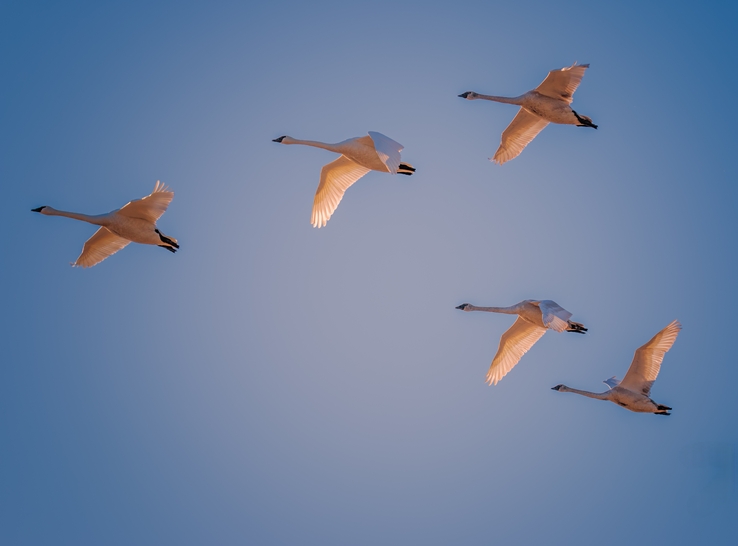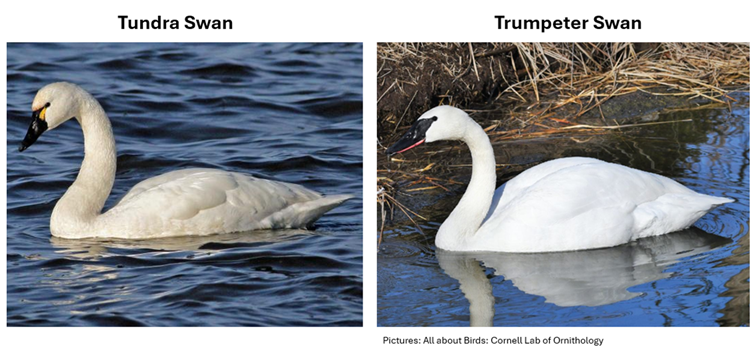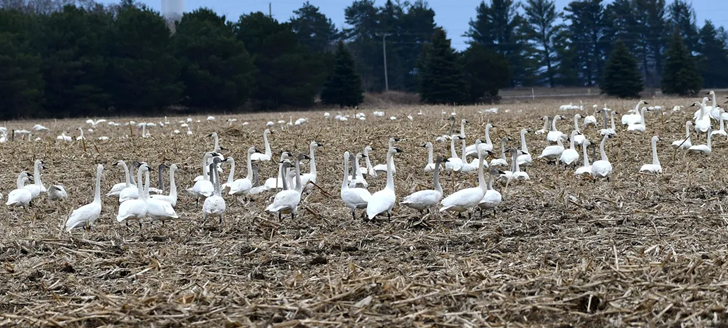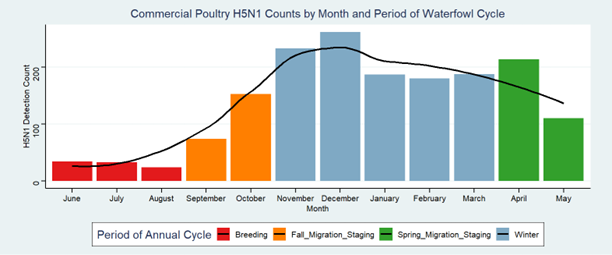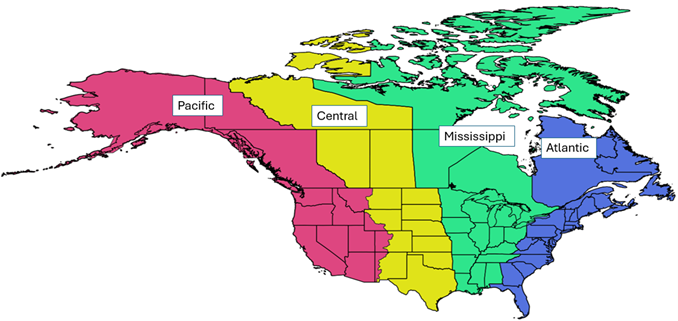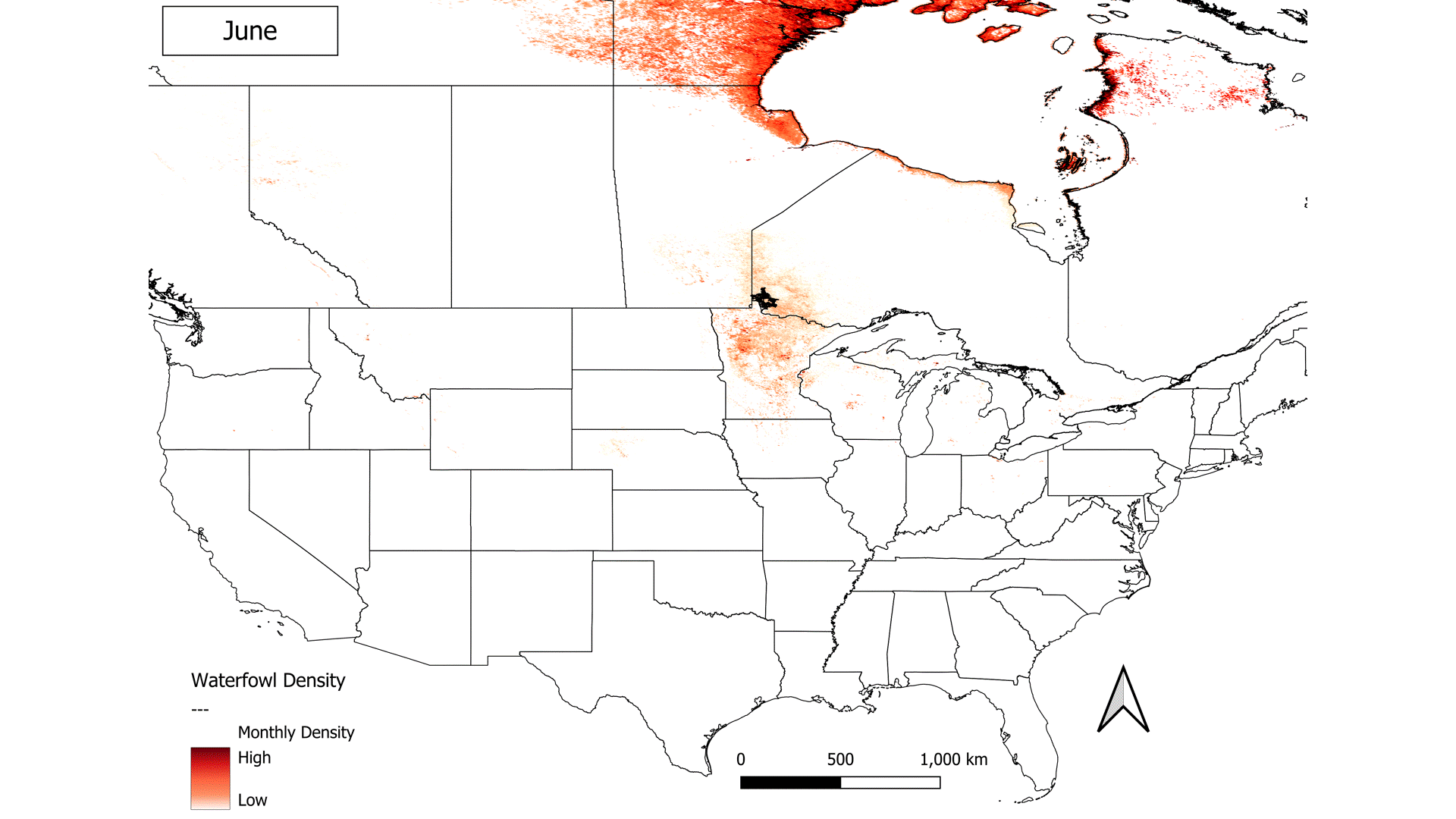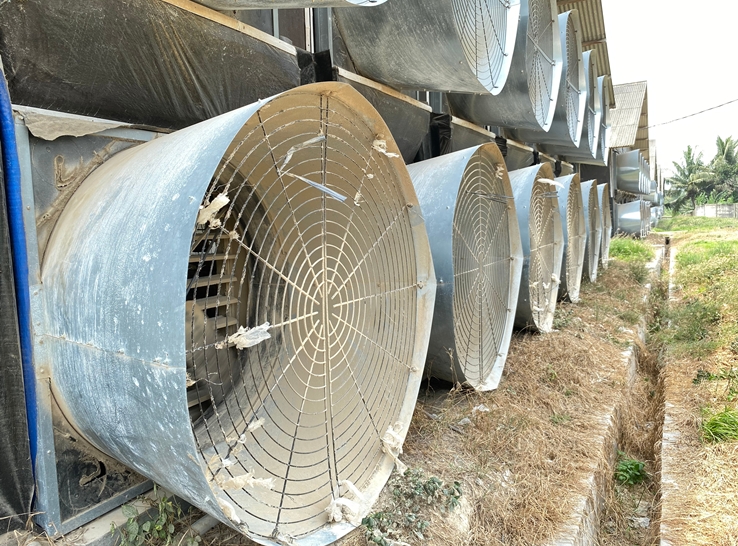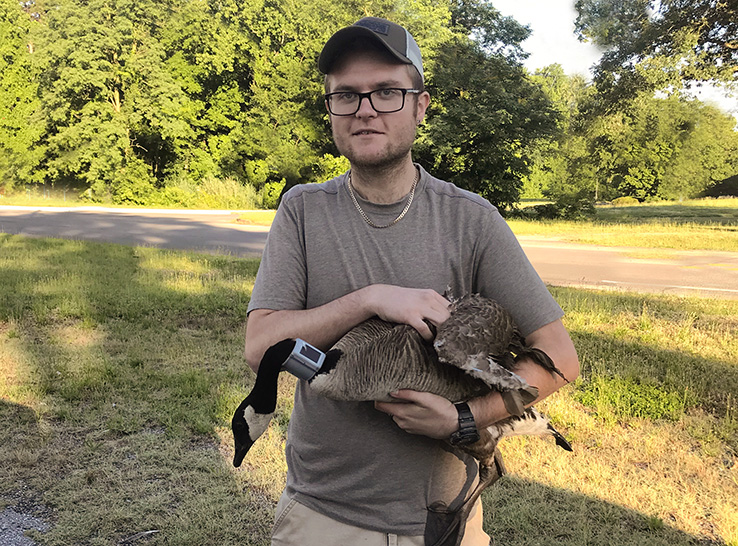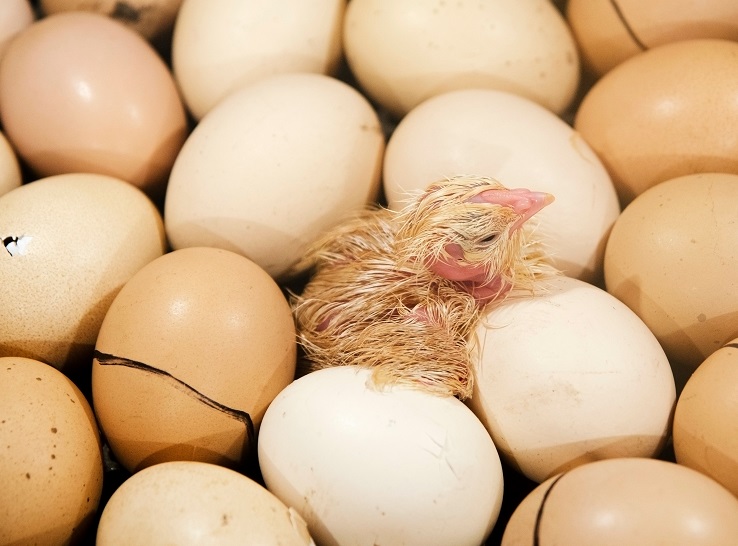By Matthew J. Hardy, MSc
AgriNerds – Co-owner, Waterfowl Biologist and Co-director of Ecological Modeling
Chester County, Pennsylvania
(Part 4 of 4, Waterfowl migration and HPAI risk across North America)
In Parts 1 through 3, we discussed dabbling and diving ducks, and then geese. Now, it’s time for the swans, America’s largest waterfowl species.
Powerful yet graceful, swans sweep across North America’s skies in timeless journeys, following ancient pathways that span thousands of miles along the continent’s great flyways: Pacific, Central, Mississippi and Atlantic.
Swans are more than striking inhabitants of America’s seasonal wetlands; they play a vital ecological and epidemiological role. Their grazing-based foraging often brings them into contact with agricultural fields and pastures, and their dependence on open water, waste grain and pasture ties them closely to human-modified landscapes. In the winter, they gather in large flocks, sometimes numbering in the thousands, frequently near poultry operations and other livestock regions.
Like geese, swans tend to show lower detection rates of highly pathogenic avian influenza (HPAI) due to their longer lifespan and strong immune systems. However, this may partly reflect limited sampling — far fewer swans are harvested by hunters, and far fewer researchers study them compared to dabbling ducks. Despite these challenges, their size, social behavior and habitat use make swans a key species for understanding and managing the spread of HPAI across the US and beyond.
For this article, I am focusing only on migratory swans, which include the tundra swan and trumpeter swan. The mute swan inhabits many landscapes across the US and is the most recognizable, but it’s actually a non-native introduced species from the UK. The mute swan undoubtedly plays a role in the larger picture of HPAI on the landscape outside of the winter, similar to that of resident geese during the summer months.
Tundra and trumpeter swans are very large birds (Figure 1). Tundra swans can reach 20 pounds (9.1kg), while trumpeter swans can reach 32 pounds (14.5 kg). Their large size allows them to tolerate extremely cold climates and breed in the extreme far north, like geese. Not only is this impressive, but it also puts swans from the US/Canadian flyways in contact with waterfowl from the European and Asian flyways during the summer, which has often been proposed as a mechanism of viral diffusion and reassortment before returning to the contiguous US in the fall and winter.
Figure 1. Swans
Swans: Why they matter
Swans occupy a diverse array of habitats, from ponds and rivers to wetlands, estuarine bays, quarries and agricultural lands, moving between them daily and seasonally. They often roost in large groups on open water, such as quarries or coastal bays, and then travel to forage during the day.
Swans need large bodies of water and open space to take off and land due to their large size. Their diet is equally flexible: In addition to feeding on wheat, waste or spilled grain in crop fields, swans have been observed grazing on hay in open cattle lots. These movements, combined with their seasonal patterns of breeding, staging and migration, bring swans into contact with a variety of environments, including areas near poultry and livestock.
Swans can also act as sentinel species for HPAI because of their long lifespans and robust immune systems, which allow them to survive and move across large landscapes while carrying or shedding the virus. Their wide-ranging movements and use of both natural wetlands and agricultural areas mean they can encounter HPAI in one location and reveal its presence in another. Monitoring swans (although not widely done) offers a critical early warning opportunity, as their observable flocks and ecological behaviors make them more detectable than some other waterfowl, helping guide management and mitigation efforts across North America.
This constant movement increases the potential for swans to pick up and spread HPAI between habitats. Coupled with their tendency to form large flocks (Figure 2), habitat adaptability and long-distance mobility, swans serve as important carriers and potential long-range dispersers of HPAI across North American landscapes.
Figure 2. An aggregation of tundra swans during the winter feeding and roosting within waste grain
Varying annual HPAI incidence
Most migratory swans in the US spend late spring through summer (May to August) on their northern breeding grounds, which limits their contact with domestic poultry. HPAI cases tend to rise from March to May as birds move northward, then peak again from September through April during southward migration and overwintering.
During the summer months, resident (non-migratory) mute swans may help maintain the virus in local environments, effectively bridging the gaps between peak migration periods. Additionally, young waterfowl in the fall are particularly susceptible due to their naïve immune systems.
By understanding swan behavior, habitat use and migratory pathways, wildlife managers and poultry producers can better anticipate and reduce the risk of HPAI outbreaks.
Figure 3. Annual cycle of H5N1 detection counts
Flyway patterns, high-risk zones
Swans follow different routes and utilize various habitats, depending on the species and geography, during their annual cycles. However, they all contribute to a shared continental picture of HPAI risk. By understanding how HPAI risk varies by flyway, species and time of the year, farmers can anticipate periods of higher threat based on migration patterns and implement targeted biosecurity measures to protect their operations (Figure 4).
Here, I break down the general trends by flyway:
Pacific flyway
In the spring, swans travel north through California’s Central Valley, the Klamath Basin and the Pacific Northwest, stopping in ponds and wetlands along the way. By summer, they settle on breeding grounds in Alaska, British Columbia and the Yukon. In the fall, large flocks gather at estuarine bays, quarries and agricultural fields, feeding on waste grain and hay in places such as the Central Valley, Great Salt Lake and Columbia Basin. Wintering swans remain in California, Washington and Nevada, maintaining links between natural wetlands and human-altered landscapes.
Central flyway
In the spring, swans move north through the Central Plains, stopping in wetlands, ponds and river systems in states like Nebraska, Kansas and Oklahoma. By summer, most settle on northern breeding grounds in the Prairie Provinces of Canada, the Dakotas and parts of Montana. In the fall, large flocks gather in wetlands, agricultural fields and open water areas, feeding on waste grain and hay in places such as the Rainwater Basin in Nebraska, Cheyenne Bottoms in Kansas and the Platte River Valley. These congregations increase the potential for HPAI transmission. Wintering swans remain in areas of southern Nebraska, Kansas and northern Texas (Figure 4).
Figure 4. Flyway patterns
Mississippi flyway
In the spring, swans travel north through the Mississippi flyway, stopping in wetlands, rivers and flooded fields in states such as Missouri, Illinois and Iowa. By the summer, most reach breeding grounds in the Prairie Provinces of Canada, Minnesota and Wisconsin. In the fall, large flocks gather in wetlands, lakes and agricultural fields, feeding on waste grain and hay in areas like the Upper Mississippi River Valley, Horicon Marsh in Wisconsin and Mississippi Sandhill Crane National Wildlife Refuge in Louisiana, which can increase the risk of HPAI transmission. Wintering swans remain in portions of Illinois, Missouri and the Gulf Coast.
Atlantic flyway
In the spring, swans move north along the Atlantic flyway, stopping in wetlands, estuaries and rivers in states such as New Jersey, Delaware and North Carolina. By the summer, most reach breeding grounds in eastern Canada, including Ontario, Quebec and the Maritime Provinces. In the fall, large flocks gather in estuarine bays, lakes and agricultural fields, feeding on waste grain and hay in areas such as Pungo Lake, Pocosin Lakes, Chesapeake Bay, the Hudson River Valley and Long Island’s coastal marshes, increasing the potential for HPAI transmission. Wintering swans remain in parts of North Carolina, New Jersey, Maryland and Delaware.
Figure 5. Real-time tracking
Forecasting movement in real time
To better prepare for and respond to HPAI threats, technology is stepping in. The WaterFowl Alert Network, developed by AgriNerds, provides real-time forecasts of waterfowl movement across the US for a variety of waterfowl species. This tool provides poultry farmers, conservationists and wildlife managers with timely insights to make location-specific decisions about biosecurity and habitat management (Figure 5).
By integrating next-generation weather radar, GPS tracking and environmental data, this system helps stakeholders anticipate when and where risk will spike, providing a vital edge in the ongoing effort to balance wildlife health with agricultural safety.
Editor’s note: The views expressed in this article are solely those of the author.


